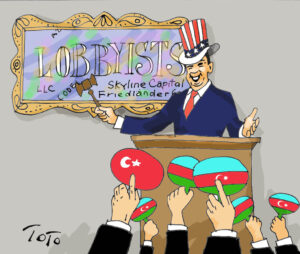BELMONT, Mass. — One of the most constant presences in the history of the National Association for Armenian Studies and Research (NAASR) has been Yervant Chekijian. Chekijian served as a member of the board of directors of NAASR for more than 20 years, and as chair for six years before retiring.

“I turned it over to the next generation last November,” he said in a recent interview.
During that time, he spearheaded the construction of the organization’s new headquarters, a building filled with floor-to-ceiling windows and temperature-controlled rooms, which replaced its former wood-paneled, dingy headquarters on Concord Avenue.
His history with — and love for — the organization, however, goes back more than 60 years, to the time when he had just moved to the US with his family, from Jerusalem. Shortly after his arrival, he had the chance to attend the celebration NAASR held for endowing the first ever Armenian Studies chair, which happened to be at Harvard.
“I was a teenager — 16 years old — when I attended the victory banquet celebrating NAASR’s successful campaign to endow a chair at Harvard University for Armenian Studies [named the Mashtots Chair]. I was amazed that as a teenager, over 1,000 people were at that banquet and everyone was very excited. Memorial Hall was alive with Armenian expectations,” he recalled.

At that point, in 1958, many Armenians here were only a few decades removed from the horrors they had survived during the Armenian Genocide. “They were here in a wonderful country where they could look forward to being able to teach the world about Armenian history, culture, identity and this was a very major, major step,” he said. “Visionaries like Manoog Young [the founding chairman of NAASR] and others came up with this initiative and now we are at that point when we are able to fulfill the mission even more comprehensively.”










